Nationality Japanese TV shows GeGeGe no Kitaro Spouse Nunoe Mura (m. 1961) | Role Manga artist Name Shigeru Mizuki | |
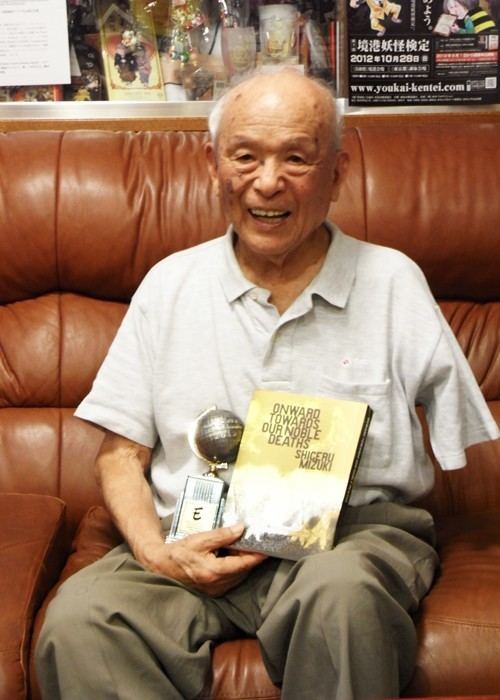 | ||
Born Shigeru MuraMarch 8, 1922Sakaiminato, Tottori ( 1922-03-08 ) Notable works GeGeGe no KitaroOnward Towards Our Noble DeathsAkuma-kunShowa: A History of Japan Children Naoko Haraguchi, Etsuko Mizuki Similar People Natsuhiko Kyogoku, Osamu Tezuka, Yoshiharu Tsuge, Hiroshi Aramata, Ryoichi Ikegami | ||
veteran manga artist shigeru mizuki dies at 93
Shigeru Mizuki (水木 しげる, Mizuki Shigeru, March 8, 1922 – November 30, 2015) was a Japanese manga author and historian, best known for his series GeGeGe no Kitarō (Japanese: ゲゲゲの鬼太郎, literally "spooky Kitarō") – originally titled Hakaba Kitarō (Japanese: 墓場鬼太郎, literally "Kitarō of the Graveyard") – Kappa no Sanpei, and Akuma-kun. Born in a hospital in Osaka and raised in the city of Sakaiminato in Tottori prefecture, he later moved to Chōfu, Tokyo where he remained until his death. His pen-name, Mizuki, comes from the time when he managed an inn called 'Mizuki Manor' while he drew pictures for kamishibai. A specialist in stories of Yōkai (妖怪, traditional Japanese monsters, ghouls, and goblins), he is considered a master of the genre. Mizuki was also a noted historian, publishing works relating to world history, Japanese history, and his own World War II experience.
Contents
- veteran manga artist shigeru mizuki dies at 93
- Shigeru mizuki manga artist passed away
- Life
- Sakaiminato
- Awards
- Manga
- Books
- References
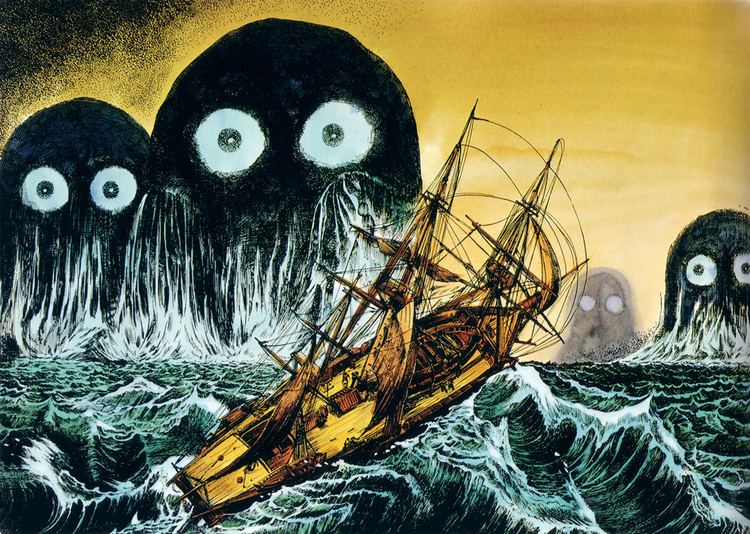
Shigeru mizuki manga artist passed away
Life
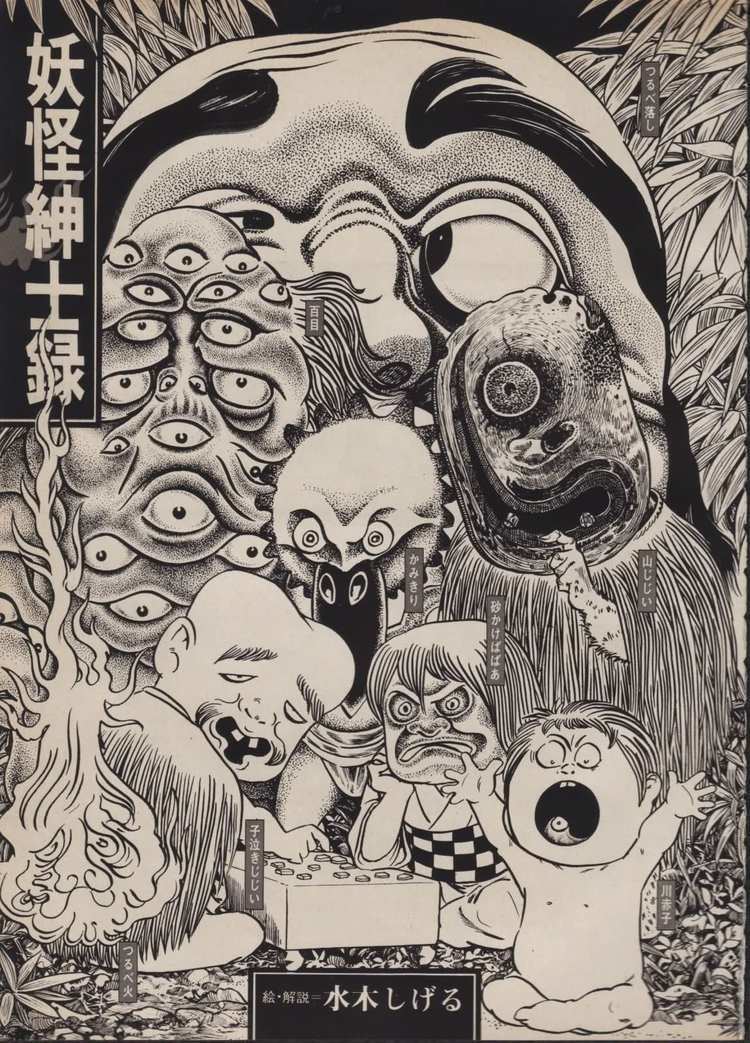
Mizuki was born Shigeru Mura (武良 茂 Mura Shigeru) in the city of Osaka, the second of three sons. He was raised in the coastal city of Sakaminato, where he spent much of his childhood as a 'scrapper': picking fights and participating in childish warfare with the neighbouring children. He displayed from an early age a particular talent for art. During his time in elementary school, Mizuki's teachers were so impressed by his skills with a pencil that they organised an exhibition of his work, and he later went on to be featured in the Mainichi newspaper as something of an artistic prodigy. In addition to this penchant for the artistic, Mizuki had an interest in the supernatural - something that was fueled by listening to ghost stories told by a local woman named Fusa Kageyama, but whom the young Mizuki nicknamed "Nononba".
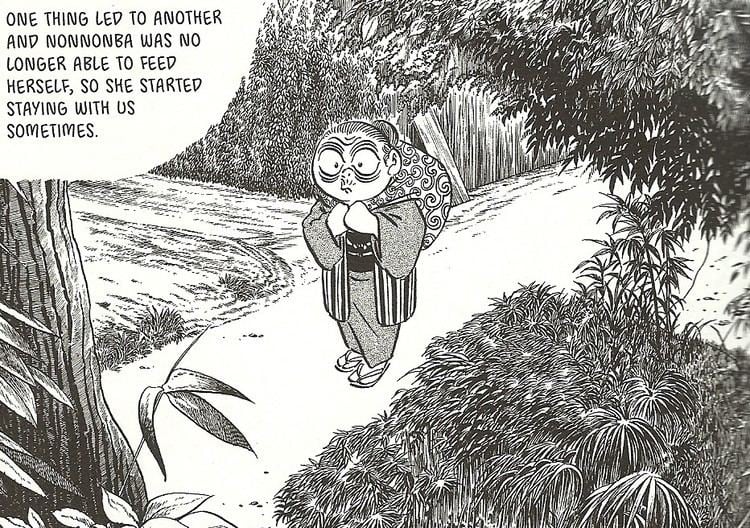
However, in 1942, he was drafted into the Imperial Japanese Army and sent to New Britain Island in Papua New Guinea. His wartime experiences affected him greatly, as he contracted malaria, watched friends die from battle wounds and disease, and dealt with other horrors of war. Finally, in an Allied air raid, he was caught in an explosion and lost his dominant (left) arm. Regarding this life-changing event, a Nov. 30, 2015 NHK announcement of his death showed excerpts of a video interview with him at age 80, in which he said that as the only survivor of his unit, he was 'ordered to die' — a prospect he considered ridiculous. The result of Mizuki's wartime experience was a concurrent sense of pacifism and goodwill. In the same interview, he explained that his Yōkai characters can be seen only in times of peace, not war, and that he purposely created these supernatural creatures to be of no specific ethnicity or nationality as a hint of the potential for humanity. While in a Japanese field hospital on Rabaul, he was befriended by the local Tolai tribespeople, who offered him land, a home, and citizenship via marriage to one of their women. Mizuki acknowledged that he considered remaining behind, but was shamed by a military doctor into returning home to Japan first for medical treatment to his arm and to face his parents, which he did reluctantly.
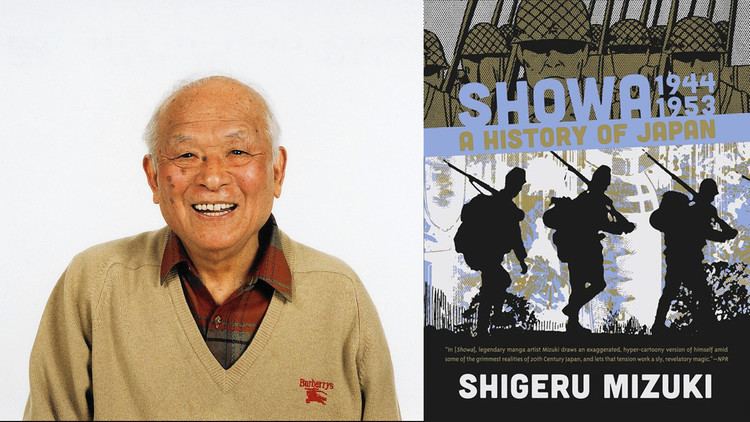
Upon arriving home, Mizuki had initially planned to return to New Guinea; however, the occupation of Japan changed that. His injuries did little to help, nor did the fact that his older brother, an artillery officer, was convicted as a war criminal for having prisoners of war executed. After his return to Japan he worked at a variety of jobs including as a fish salesman and kamishibai artist.
In 1957, Mizuki released his debut work, Rocketman. He published numerous works afterwards, both dealing with the military and wit yōkai. He has also written many books on both subjects, including an autobiography about his time on New Britain Island and a manga biography of Adolf Hitler. In 1991, he released a short work titled War and Japan published in The Sixth Grader, a popular edutainment magazine for young people, detailing the atrocities committed by the Japanese Army during their rampage in China and Korea and is narrated by Nezumi Otoko. The work serves as a powerful counterpoint to revisionist manga like the works of Yoshinori Kobayashi and by extension a way for Mizuki to express his anger at those responsible for all of Japan's victims. When not working in either field, he paints a number of subjects, though these works are not as well known as his literary ones which have made him a household name. In 2003, he returned to Rabaul to rekindle his friendship with the locals, who had named a road after him in his honor.
In 2005, Mizuki appeared in a cameo role in Yōkai Daisenso ("The Great Yokai War") directed by Takashi Miike, a film about Yōkai inspired by his work as well as the work of Aramata Hiroshi. He appears towards the end of the film in the role of the Great Elder Yōkai: a pacifistic character who condemns the warring ways of the film's antagonist and reaffirms the role of Yōkai as peaceful, playful creatures. A brief explanation about his works also is mentioned in the film. In 2010, NHK broadcast an asadora about his married life, Gegege no Nyōbō, based on his wife's autobiography.
On November 30, 2015, Shigeru Mizuki died of heart failure in a Tokyo hospital after collapsing at his home from a heart attack.
Sakaiminato
Sakaiminato, Mizuki's childhood home, has a street dedicated to the ghosts and monsters that appear in his stories. One hundred bronze statues of the story's characters line both sides of the road. There is also a museum featuring several of his creations and works.
Awards
Mizuki has won numerous awards and accolades for his works, especially GeGeGe no Kitaro. Among these are:
